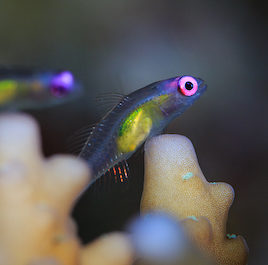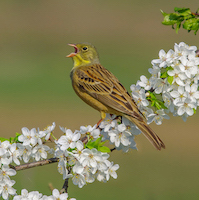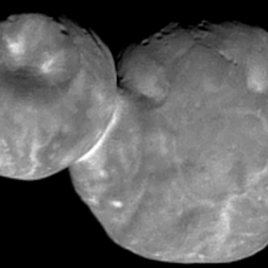Proceedings of the Royal Society B: Biological Sciences Published May 29, 2019 | 17:01 EDT (Brief from the Royal Society) Coral reef degradation is progressing at an unprecedented rate. With the death of corals, substantive changes occur in the odour landscape for remaining reef fish. Researchers showed that changing the background odour of a habitat dramatically […]
Category: Heads Up
Water research and education benefit wealthy, not developing countries 
UN University Institute for Water, Environment and Health Published May 29, 2019 | 11:00 EDT (News release from UN University) Post-secondary education and research aimed at tackling the global water crisis is concentrated in wealthy countries rather than the poorer, developing places where it is most needed. Two reports call for reducing this imbalance between resources and […]
May 28, 2019 | SMCC Heads Up 
Cardio-powered salmon | Scent of a (fish) predator | Hummingbird peer learning | May 28, 2019 | SMCC Heads Up – Embargoed and recently published research with a Canadian focus, curated by SMCC for science journalists. Read more>

Tiny fish make outsized contributions to coral reefs 
Science Published May 24, 2019 | 14:00 EDT (News release from AAAS) The smallest of marine vertebrates – seldom-seen, historically overlooked reef fishes – contribute 40 per cent of reef-fish biodiversity and account for nearly two-thirds of near-reef larval fish pools. They also provide nearly 57 per cent of the total fish flesh consumed by larger reef […]
30 new species of disease-causing bacteria identified 
PLOS Neglected Tropical Diseases Published May 23, 2019 | 14:00 EDT (News release from PLOS) Researchers identified 30 new species of Leptospira, an emerging zoonotic disease that affects more than one million people around the world each year. The data provide new insights into how virulence develops in the pathogenic species. Lead author: Antony Vincent, INRS-Institut […]
Trading gizzard mass for flight muscles: Remodelling migratory bird bodies 
Proceedings of the Royal Society B: Biological Sciences Published May 22, 2019 | 17:01 EDT (Brief from the Royal Society) Many long-distance migratory birds undergo seasonal flight-muscle build up to power long-distance flights and digestive-machinery break down to reduce body mass. Captive experiments with the red knot shorebird reveal that these body-remodelling patterns can be […]

Bunting hunting speeds tasty songbird’s decline 
Science Advances Published May 22, 2019 | 14:00 EDT (News release from AAAS) Up to 30,000 ortolan buntings are killed illegally for food each year in southwest France, where hunters say the migrating songbirds come from large, stable populations elsewhere in Europe. Genetic testing, tiny electronic bird-backpack trackers, and feather-isotope analysis confirm the birds come from small, […]
Insight into how ice forms on other planets and in space 
Nature Published May 22, 2019 | 13:00 EDT (News release from Oak Ridge National Laboratory) In an experiment designed to create a super-cold state of water, scientists unexpectedly discovered how dense, crystalline phases of ice thought to exist beyond Earth’s limits might form. Observation of the crystalline ice phases challenges accepted theories about water and […]
First fungus among us: Billion-year-old fungi found in Arctic 
Nature Published May 22, 2019 | 13:00 EDT (News release from Nature Research Press) Researchers identified fossil fungi dating from 900 to 1,000 million years ago in Arctic Canada. The findings provide evidence that fungi evolved 500 to 600 million years earlier than previously thought, pushing back the origins of the group of animals that […]
May 21, 2019 | SMCC Heads Up 
First fungus | Exo-ice | Buff birds | May 21, 2019 | SMCC Heads Up – Embargoed and recently published research with a Canadian focus, curated by SMCC for science journalists. Read more>
Food insecurity in Nunavut increased after food program introduced 
Canadian Medical Association Journal Published May 21, 2019 | 00:15 EDT (News release from Joule Inc.) In 2010, before the Nutrition North Canada program began, 33 per cent of households in Nunavut communities experienced food insecurity. By 2014, when the program was implemented, 46 per cent of households reported food insecurity. Lead author: Andrée-Anne Fafard St-Germain, […]

First results from New Horizons space mission: Untouched for 4.5 billion years 
Science Published May 16, 2019 | 14:00 EDT (Summary by AAAS) The first results from the New Horizons spacecraft’s flyby of Kuiper Belt object MU69, or Ultima Thule, show it is an ancient relic that has remained largely untouched – even by the heat of the Sun – since its formation roughly 4.5 billion years […]
Targeted laser therapy closes single blood vessels 
Science Advances Published May 15, 2019 | 14:00 EDT (Summary by AAAS) A new method to selective close single blood vessels within tissue uses laser therapy called multiphoton photothermolysis. The precise microsurgery technique could be used to treat vascular diseases and malfunctioning blood vessels in cancers, macular degeneration, and port wine birthmark stains. Video Corresponding author: […]
City greenscapes could help species displaced by climate change 
Ecology Published May 14, 2019 | 17:00 EDT (News release from Tufts University) This study shows that animals move quickly through low-quality habitats to reach high-quality breeding areas, providing new insight into how conservationists and city planners could manage urban landscapes to help species shift ranges in response to climate change. Suburban and urban green […]
Unrecognized sleep apnea can trigger heart attack after non-heart surgery 
JAMA Published May 14, 2019 | 14:00 EDT (Summary video from JAMA Network) Among adults undergoing major non-cardiac surgery, sleep apnea increased patients’ risk of heart attacks after surgery. The link was found only in patients who had severe obstructive sleep apnea that had been undiagnosed. Editorial Canadian authors: Stanley Tam, Scarborough Health Network, Ontario – stanleytam_1@hotmail.com; […]
May 14, 2019 | SMCC Heads Up 
Kuiper Belt results | Urban wildlife pipelines | Sleep-apnea heart attacks | May 14, 2019 | SMCC Heads Up – Embargoed and recently published research with a Canadian focus, curated by SMCC for science journalists. Read more>
